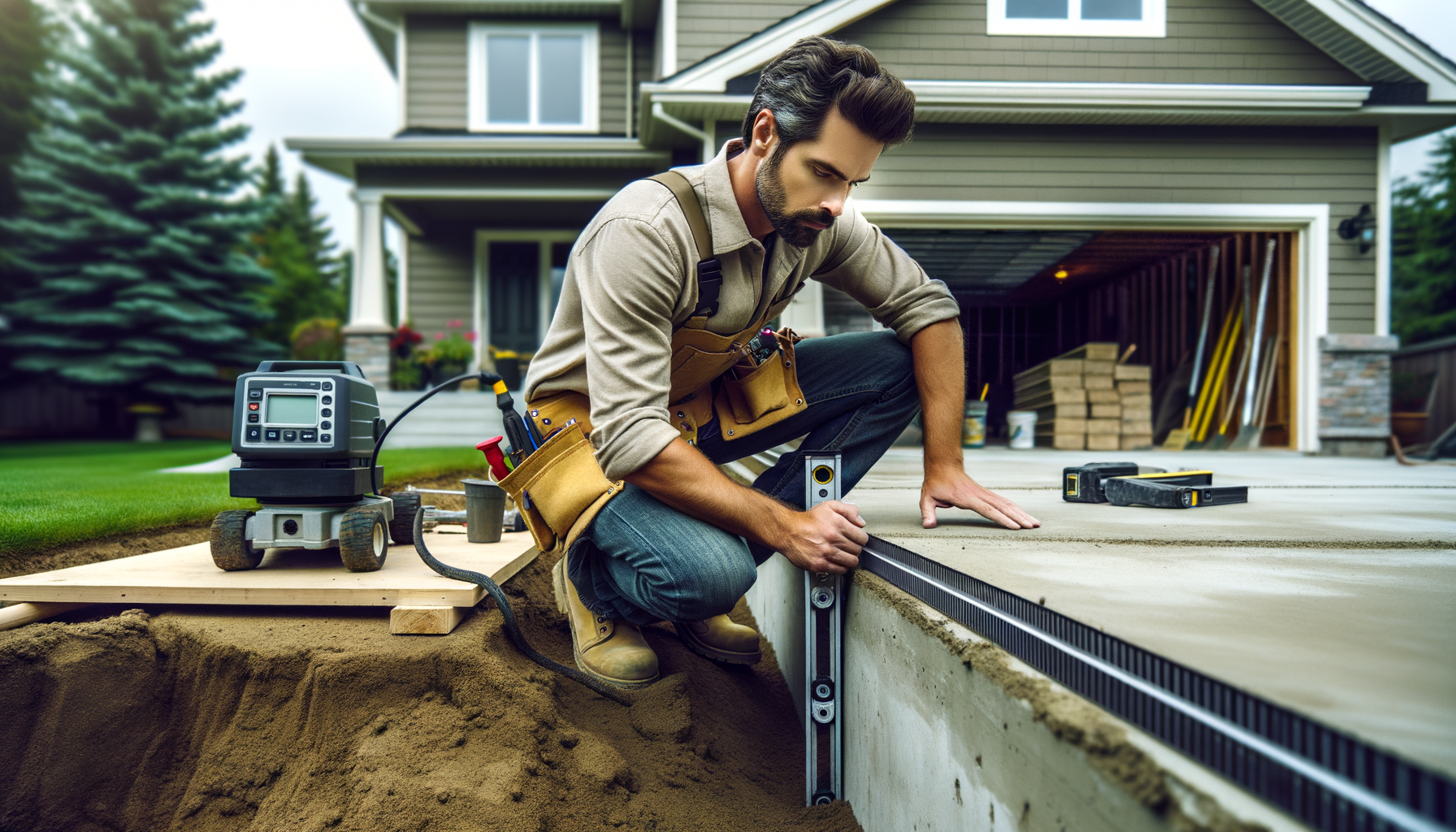What is Foundation Leveling?
- What It Is: Foundation leveling means making your home’s foundation, the part of the house that touches the ground, level and straight again.
- Why It’s Important: It helps keep your house strong, safe, and prevents more damage.
Signs Your Foundation Needs Leveling
- Cracks in Walls and Floors: Look for cracks in walls, especially near doors, windows, and corners. Check for cracks in the floors too.
- Sticking Doors and Windows: If doors and windows are hard to open or close, your foundation may be shifting.
- Uneven Floors: Use a level to see if floors slope. Walk around and feel for spots where the floor seems higher or lower.
- Gaps Around Doors and Windows: Check outside around doors and windows. Gaps may mean the foundation is moving.
Common Causes of Foundation Issues
- Soil Movement: Different kinds of soil behave differently. For example, clay soil can shrink and swell a lot, affecting the foundation.
- Poor Construction: If a house wasn’t built properly, it might have foundation problems later on.
- Tree Roots: Trees too close to the house can have roots that push against the foundation.
- Plumbing Leaks: Constant leaks can wash away the soil under the foundation, causing it to sink or settle.
Methods of Foundation Leveling
- Mudjacking: This pumps a mixture of water, soil, and cement under the foundation to lift it.
- Polyurethane Foam Injection: This injects foam under the foundation that expands and lifts it.
- Piering Systems: This drives steel rods or piers into the ground to support and lift the foundation.
Pros and Cons of Different Leveling Methods
- Mudjacking:
- Pros: Cheap and fast.
- Cons: Might not last long, and the foundation could settle again.
- Polyurethane Foam Injection:
- Pros: Quick and less messy.
- Cons: Costs more and may not work for very bad problems.
- Piering Systems:
- Pros: Strong and lasts a long time, good for big problems.
- Cons: Expensive and needs a professional.
DIY vs. Professional Foundation Leveling
- DIY Methods: You can fix small cracks or use shims yourself. These are usually temporary fixes.
- Professional Services: For big cracks, uneven floors, or lots of settling, it’s best to hire professionals who know what they’re doing.
- Cost Comparison: DIY might be cheaper at first, but professional fixes usually last longer and save money over time.
How to Choose a Foundation Repair Contractor
- Research and Reviews: Look for reviews online and ask friends or neighbors for recommendations.
- Experience and Expertise: Make sure the contractor has experience with foundation leveling and knows what they’re doing.
- Licensing and Insurance: Check that the contractor is licensed and insured for protection against accidents.
- Warranty and Guarantees: Choose contractors who offer warranties so you know they stand by their work.
Preventative Measures
- Water Management: Use gutters to keep water away from your foundation. Make sure the ground slopes away from your house.
- Landscaping Tips: Don’t plant big trees close to your home, and use plants that need less water.
- Regular Inspections: Check your foundation regularly for signs of trouble. Catching problems early can save money.
- Foundation Maintenance: Seal cracks and make sure water doesn’t pool around your house.
Encouragement and Call to Action
Keeping a level foundation is important for your home’s safety and lifespan. Regular checks and knowing what to look for can help you avoid expensive repairs. If you see signs of foundation trouble, call a professional for help. Your home’s stability depends on it.
For more information and expert advice on foundation repair and maintenance in Canada, visit Foundation Repair Canada.


Leave a Reply